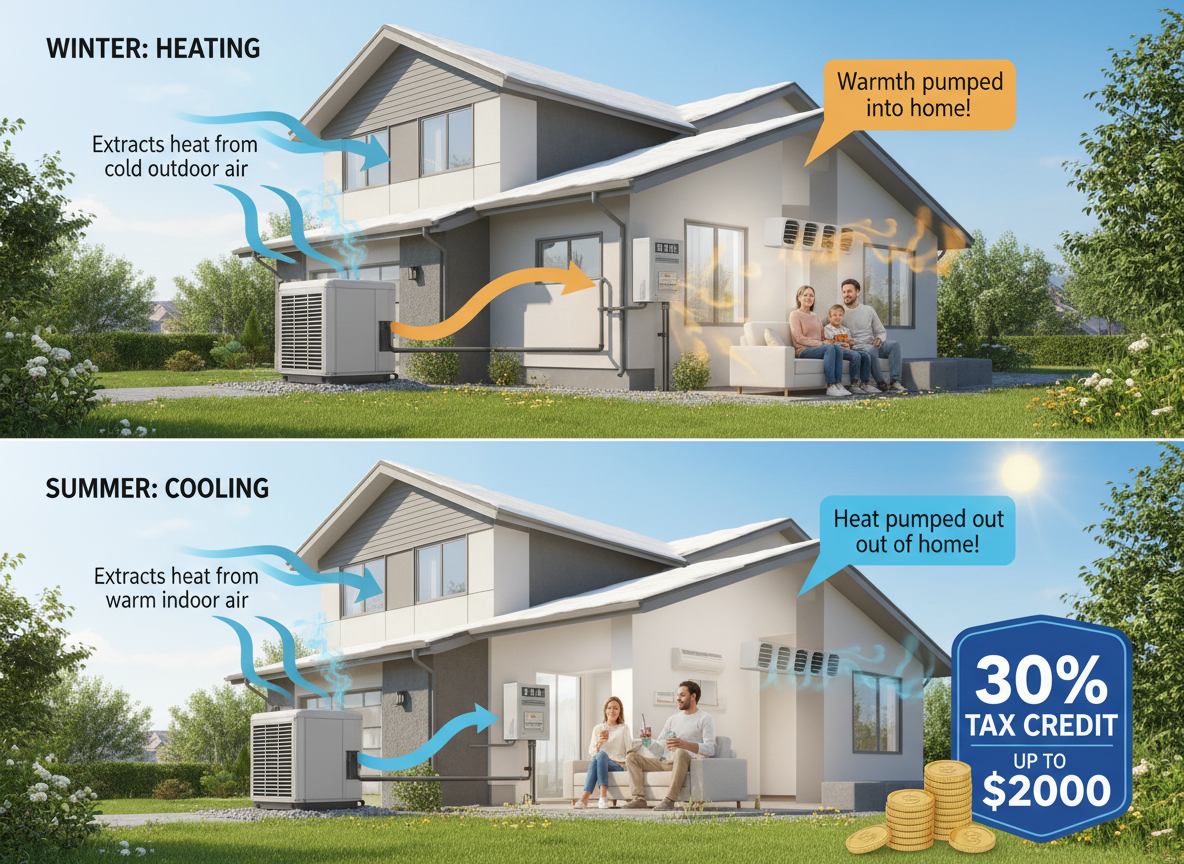
Carbon monoxide (CO) is a colorless and odorless gas created from a natural gas furnace by incomplete combustion. We breathe in small amounts of CO outdoors, but it is when CO levels become concentrated in small spaces that it can become dangerous. A properly working furnace will vent the carbon monoxide out of your home.
However, older models between 16 and 20 years old, or an improperly working furnace can produce large amounts of CO. Furthermore, a leak in the venting system can lead it to leak into your home as well. A crack could also appear in the heat exchanger or combustion chamber in the furnace, which could cause CO to leak into your home. Leaks are rare, but if you believe you may have a CO leak coming from your furnace take it seriously.
Furnace Symptoms
Take a look at your furnace as it may be displaying signs of a carbon monoxide leak. Some signs your furnace may show of a leak are a yellow or flickering flame. Other signs are streaks of soot, moisture around windows or walls, or visible rust on the vent pipe. There are two common locations where a furnace will leak CO within the heat exchanger and the exhaust flue.
The exhaust flue is the round pipe that comes from the top of the furnace and exits your home through the roof where it exhausts the air. However, as the furnace ages, moisture can make its way into the flue pipe. The moisture can lead to rust developing on the metal flue pipe and lead to holes. This is where the risk for a leak in your home increases. If you notice any rust developing on the metal flue pipe it is important to call a professional to take care of the issue right away. The second most common furnace location at risk for a leak is the heat exchanger.
The heat exchanger is the part of the furnace where the combustion takes place. This air is then exhausted by the furnace flue pipe. However, like the flue pipe the heat exchanger can also develop cracks over time due to age, wear and tear or from exposure to moisture. Cracks that develop in the heat exchanger can allow the combustion air to be circulated in your home. A heat exchanger crack may be more difficult to detect, and it can lead to a CO leak over a longer period. A trained technician can detect a leak during routine furnace maintenance.
Physical Symptoms

Carbon monoxide is known as the silent killer and if it is inhaled long enough it can become fatal, especially to the most vulnerable groups such as babies, elderly, or ill. According to the Centers for Disease Control (CDC) more than 400 Americans die each year from carbon monoxide exposure.
Identifying and eliminating any CO leaks is essential to avoid any potential serious health issues. There are both short term and long-term effects that result from prolonged exposure. Some short-term symptoms include frequent headaches, nausea, vomiting, dizziness, flu-like symptoms or even sick pets. Symptoms of long-term exposure include memory loss, brain damage or heart complications. If you are consistently experiencing multiple symptoms without reason it may be cause for concern. Furthermore, keep in mind that your symptoms may be less severe when you are away from the source of carbon monoxide.
How to Prevent a Furnace Carbon Monoxide Leak
The number one step you can take to prevent carbon monoxide leaks from developing in your furnace is to have it regularly maintained by a professional, at least once a year. A professional is trained to properly clean the furnace and check for any cracks or leaks. Be sure the technician also has a CO detection device.
If a technician finds your furnace in need of immediate repairs, do not wait to get them done. In between maintenance visits, learn what filter is best for your system and change it regularly. Also, be sure to keep all vents in your home clear of debris especially near the opening of the flue pipe on the roof.
Another important step you can take is to install CO detectors on every floor of your home and be alert to any symptoms of carbon monoxide poisoning mentioned above. Furthermore, leave furnaces or any other household appliances to be installed by qualified technicians.
Contact Us Today
If you are worried your furnace may be leaking carbon monoxide contact us. A CO leak in your furnace is not a DIY project. We can help you identify where your system is leaking and determine what repairs are needed. Have your furnace maintenance performed and inspected at least once a year by a professional.
In a carbon monoxide emergency, it is important to get fresh oxygen into your blood as soon as possible. If you suspect you have been exposed to CO contact your doctor and explain your symptoms and that you suspect carbon monoxide poisoning. Or you can contact your local poisoning center at 1-800-222-1222 or visit poison control site for more information.
If you have questions about your furnace or would like to schedule furnace maintenance give us a call today at 818-341-3406. To learn more about services our company offers, please visit our homepage.
Carbon Monoxide and Your Furnace Related Posts:






















.png)














